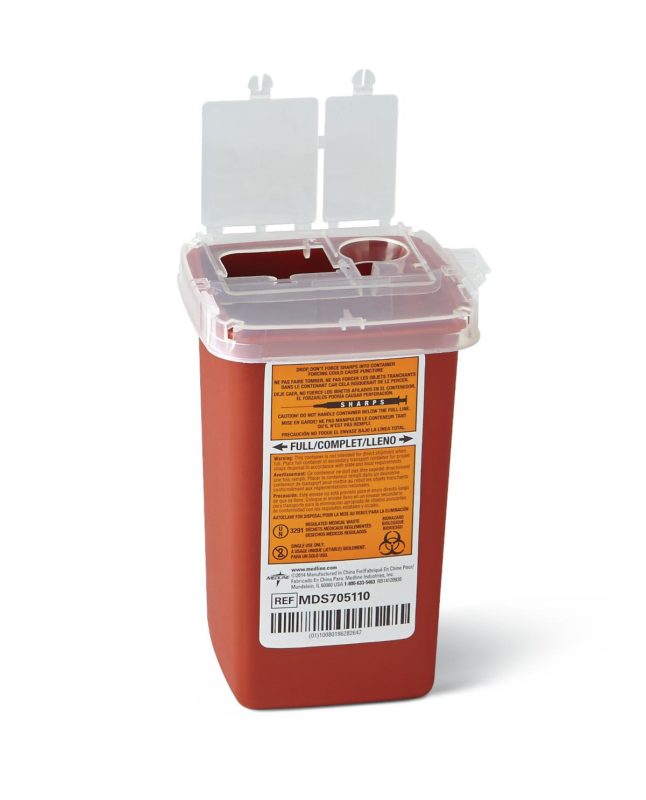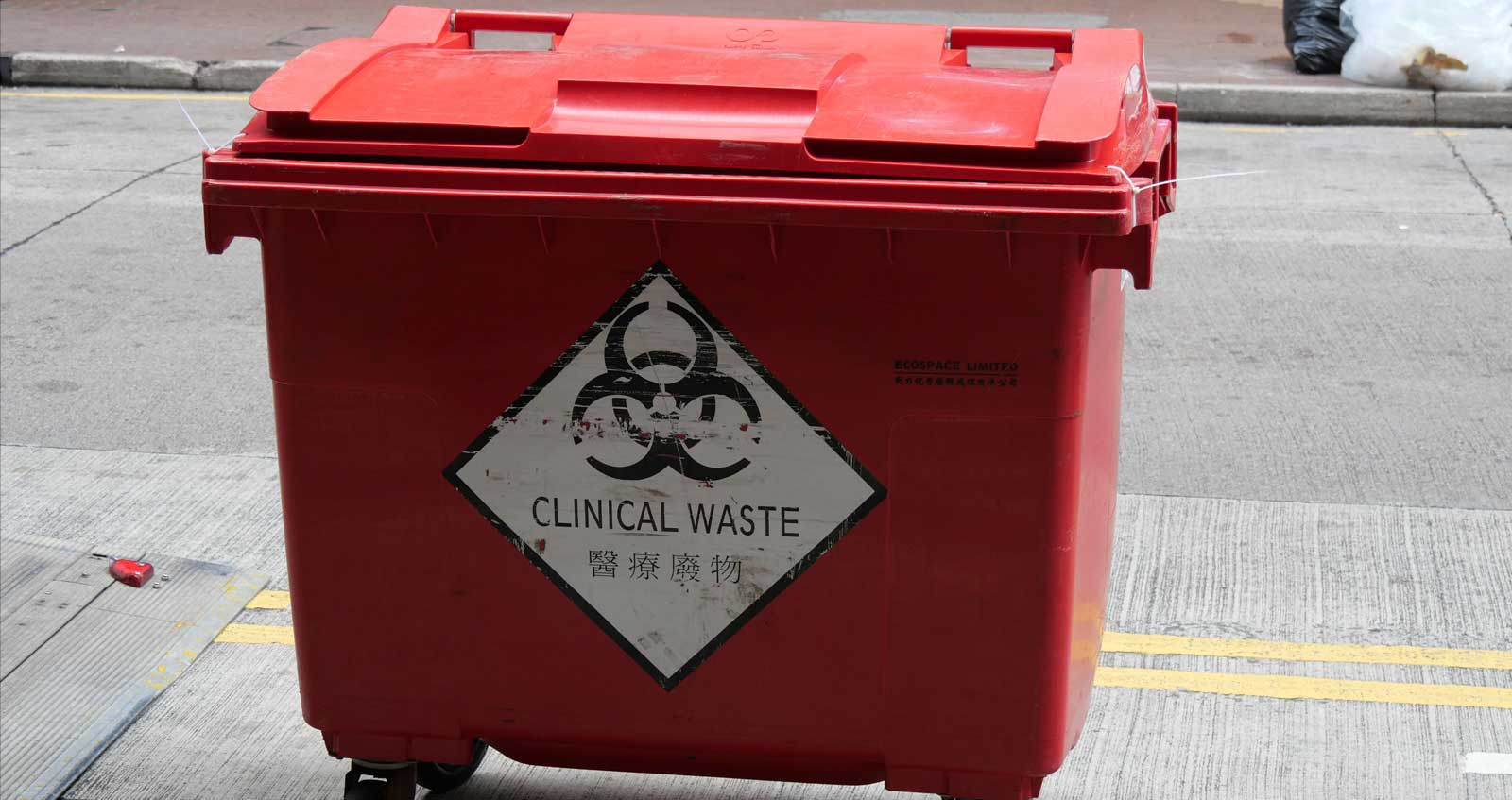Defending Wellness: Revealing the Essence of Professional Medical Waste Removal
Defending Wellness: Revealing the Essence of Professional Medical Waste Removal
Blog Article
Stay Ahead of Rules: Professional Advice on Medical Garbage Disposal
In a globe where the medical care sector is frequently advancing, it is important for medical facilities to stay in advance of laws when it comes to the correct disposal of clinical waste. From recognizing the various classifications of medical waste to executing the right collection and segregation approaches, this conversation will offer important insights and workable ideas to assist facilities stay in advance of guidelines in the ever-changing landscape of medical waste disposal.
Understanding Clinical Waste Categories
Comprehending medical waste groups is crucial for appropriate disposal and management in healthcare centers. Clinical waste refers to any kind of waste produced by healthcare tasks that may pose a hazard to public health or the setting. It is important to categorize clinical waste accurately to guarantee its risk-free handling, therapy, transportation, and disposal.
There are a number of categories of medical waste that medical care facilities require to be accustomed to. One of the most common classifications consist of contagious waste, pathological waste, sharps waste, pharmaceutical waste, and chemical waste. Each group has particular standards and regulations for its appropriate monitoring and disposal.
Infectious waste includes products contaminated with blood or other physical liquids, such as handwear covers, gowns, and lab societies. Pathological waste refers to human tissues, body organs, or body components that require special delivery and disposal. Sharps waste consists of made use of needles, syringes, and other sharp objects that can trigger injury and send infections. Drug waste comprises expired, unused, or polluted medicines that require careful handling and disposal. Finally, chemical waste consists of solvents, anti-bacterials, and various other chemical substances used in healthcare facilities.
Staying Up-To-Date With Regulatory Modifications
Staying present with regulative modifications is important for health care facilities to make sure compliance and proper management of clinical garbage disposal. medical waste removal near me. With laws frequently advancing, it is crucial for medical care facilities to stay current to stay clear of charges, fines, and potential injury to the atmosphere and public health and wellness
To stay in advance of regulative changes, healthcare centers ought to establish a system for surveillance and tracking updates. This can be done by subscribing to governing e-newsletters, attending workshops and seminars, and actively joining market organizations. Furthermore, facilities must designate a personnel or group in charge of remaining notified and disseminating info to relevant stakeholders.
Routine interaction with regulative agencies is likewise vital. Health care centers ought to establish partnerships with regional, state, and government agencies to ensure they are mindful of any modifications in regulations that might impact their waste monitoring practices. This can be done with normal conferences, engagement in public comment durations, and proactive interaction with governing agencies.
Moreover, healthcare centers should think about partnering with waste management business that concentrate on medical garbage disposal (medical waste disposal services with WasteX). These business are commonly fluent in the most recent guidelines and can supply support and support to guarantee compliance
Applying Correct Collection and Segregation Methods
To effectively take care of clinical waste disposal, healthcare centers should establish correct collection and partition techniques according to governing guidelines. Implementing these approaches makes sure the safe handling and disposal of possibly dangerous products, secures the environment, and decreases the danger of infections and injuries to medical care workers and read this post here the public.
Appropriate collection and partition techniques entail using marked containers and identifying systems. Medical care facilities need to supply clearly identified containers for different kinds of clinical waste, such as sharps, infectious waste, pharmaceutical waste, and non-hazardous waste. These containers need to be color-coded and clearly marked to stay clear of confusion and advertise simple identification.
Furthermore, medical care facilities must educate their staff on the proper procedures for accumulating and setting apart medical waste. This includes informing them on the various types of waste, the proper containers to make use of, and the significance of adhering to standards and policies. Normal training sessions and correspondence course must be performed to ensure that personnel stay current on ideal practices.
Furthermore, health care facilities must develop a system for routine collection and disposal of clinical waste. This might include partnering with qualified waste monitoring firms that concentrate on clinical garbage disposal. These firms will certainly make certain that the collected waste is transferred and gotten rid of in compliance with regulative requirements.
Choosing the Right Disposal Methods

Incineration is just one of the most effective and common techniques for throwing away certain kinds of clinical waste, such as pathological waste and sharps. It involves the controlled burning Extra resources of waste at heats, lowering it to ash. However, incineration can launch harmful contaminants right into the air and add to air pollution.

Chemical therapy entails the usage of chemicals to counteract the waste and decontaminate. Microwave therapy makes use of microwave power to warm and sanitize the waste.
Making Sure Compliance With Documentation and Training
After thoroughly considering the appropriate disposal methods for clinical waste, medical care facilities should guarantee compliance with laws and decrease ecological impact by implementing reliable documents and training procedures. This step is critical in preserving a risk-free and sustainable environment for both medical care workers and the public.

Healthcare employees who take care of medical waste needs to get appropriate training on waste partition, handling, and disposal treatments. By providing thorough training, healthcare facilities can empower their personnel to make informed decisions and minimize the danger of inappropriate waste disposal.
Final Thought
Finally, staying in advance of regulations in medical garbage disposal is important for medical care facilities. medical waste removal near me. Comprehending the various groups of medical waste, staying upgraded with governing changes, carrying out correct collection and segregation techniques, selecting the ideal disposal methods, and making sure conformity with documentation and training are all essential steps. By following these standards, medical care companies can effectively handle here and get rid of of clinical waste in a safe and liable manner
From understanding the different classifications of medical waste to carrying out the ideal collection and partition approaches, this conversation will certainly offer actionable suggestions and important insights to help facilities stay in advance of laws in the ever-changing landscape of clinical waste disposal. - medical waste disposal services with WasteX
The most common classifications consist of contagious waste, pathological waste, sharps waste, pharmaceutical waste, and chemical waste. Medical care facilities must give clearly identified containers for various types of medical waste, such as sharps, transmittable waste, pharmaceutical waste, and non-hazardous waste. Healthcare facilities must develop an extensive system to tape and track all facets of medical waste disposal, including kinds of waste created, amounts, and disposal methods utilized. Health care employees that handle medical waste must obtain appropriate training on waste segregation, dealing with, and disposal procedures.
Report this page